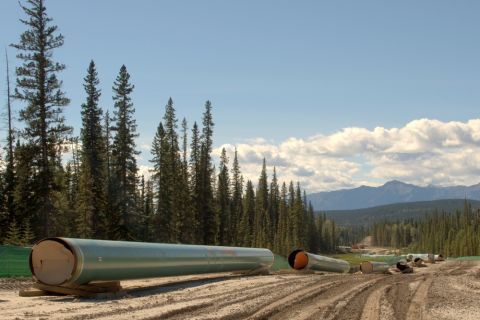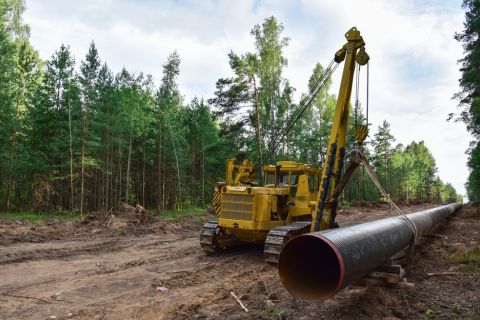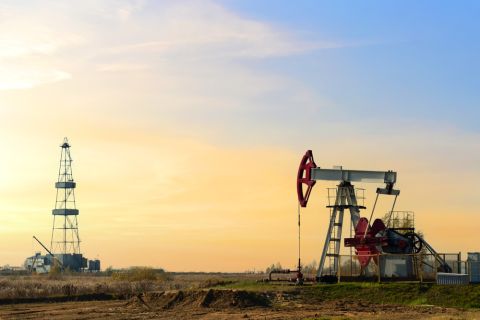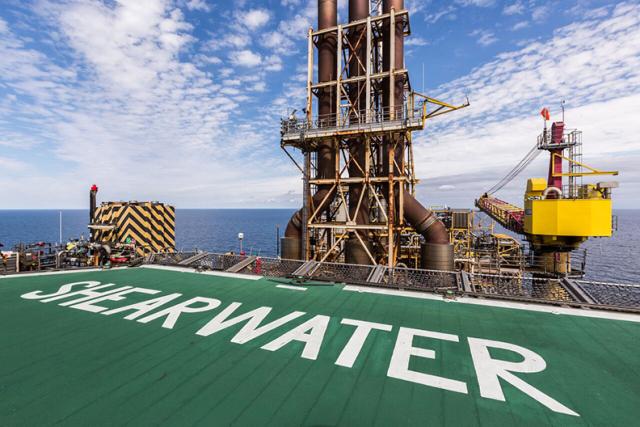
ABERDEEN--Wael Sawan was handed the reigns by long-time incumbent Andy Brown, who is leaving Royal Dutch Shell after 35 years. Sawan is a Canadian citizen and currently executive vice president, deepwater. He joined Shell in 1997 and has held a variety of commercial and operational leadership roles across the upstream, integrated gas and downstream businesses.
Last year Shell took the final investment decision on seven investments in the UK that will see it drill 20 development wells, and up to five exploration and appraisal wells in the coming few years. To achieve this, they will commit roughly £600 million to £700 million (US$737 million to US$860 million) a year over that time. That list of upcoming projects is impressive yet challenging.
Shearwater gas hub will be modified, and a 23-mile pipeline from the Fulmar Gas Line (FGL) to Shearwater installed, enabling wet gas to flow into the Shell Esso Gas and Associated Liquids (SEGAL) pipeline. At the Penguins field development, Shell took the final investment decision to redevelop the Penguins oil and gas field in the UK North Sea using a floating production, storage and offloading vessel.
The BP-operated Alligin Field West of Shetland received approval from the Oil and Gas Authority (OGA) to proceed with the Alligin development, which will target 20 million barrels of oil equivalent and is expected to produce 12,000 barrels gross of oil equivalent a day at peak. The development will include new subsea infrastructure, consisting of gas lift and water injection pipeline systems and a new control umbilical.
RELATED:
- Woodside Energy Moves Past Hype To Deploy Artificial Intelligence At Pluto LNG
- Norway Puts Oil, Gas Resource Potential, Growth In Spotlight
At Fram, peak production is expected to produce around 41 million standard cubic feet a day (MMscf/d) of gas and 5,300 barrels per day of condensate, which combined equates to 12,400 barrels of oil equivalent per day. Four new development wells will be drilled and the natural gas and liquids they produce will be transported via a newly installed subsea pipeline to the Shell-operated Shearwater platform.
Nearby Arran is expected to produce around 100 Mmscf/d of gas and 4,000 bbl/d of condensate, which combined equates to 21,000boe/d, with gas again transported to the Shearwater platform by a new pipeline. Finally, there is the investment in the Gannet E field and export infrastructure in the central North Sea.
Better Together
To manage these projects and ensure that operational efficiency is maximized, Sawan believes that greater collaboration is critical. “I have been in the industry for 22 years, and it is difficult not to admire what the industry has done,” he says. “If I look back over five decades ago, to our predecessor and the innovation, courage, pathfinding and pioneering spirit that they showed to be able to set up the sector that we enjoy today and set up the economic boom that helped the UK and created the many jobs, I think, is unparalleled. It really started from a spirit of collaboration, and this collaboration was demonstrated over the past five years in the way the sector had to reset itself from a competitiveness perspective.”
According to Sawan, it is a sector that has bloated and allowed the escalation of complexity that set it back many years. “While we have made great progress over the last five years through collaboration, and particularly through the partnerships between government, regulators, operators and contractors that have been fundamental to that reset, there is more to do,” he said. “If I project to 2050 and reflect on what will folks in the industry think about this period that is upon us in the 2020s I think undoubtedly, the reflection is going to be that collaboration is the underpinning element that is going to drive this sector towards a cleaner energy future.”
Making It Pay
The challenges for operating on the UK Continental Shelf (UKCS) come in many guises. The looming cost of decommissioning, the UK Government’s strategy to reach net-zero carbon emissions by 2050, the difficulties of recruiting and retaining tech-savvy employees are amongst them. However, for Sawan top of the list is making the UKCS a cost-effective place to do business both from a capital expenditure operational efficiency standpoint.
“Number one, in my mind, is how do we continue to ensure there is enough rent, rent for the entire value chain to create profitable delivery for the sector?” he said. “Fundamentally, capital dollars are attracted to where there is going to be attractive returns, and we are competing against several other countries who are also on the journey to attract capital.
“In the UK continental shelf, at the heart of the improvements over the last five years has been elimination or removal of the waste that had crept into our supply chains, and in that aim, I think we have come a long way. In our business unit the development costs in investments in the North Sea are down by some 45% over the past five years, that has fundamentally changed the attractiveness of the investments we are looking at here. However, that’s not enough. There is more we need to do.”
One step the industry has taken according to Sawan is to move from what used to be an adversarial relationship between operators and contractor partners into one where there is a lot more collaboration. However, he believes that the industry needs to think about the next level of integration, where all stakeholders are fundamentally trusting each other.
The drive is also on to incorporate digital technologies such as in the Shearwater platform where Shell has been developing models that make use of the significant amounts of historical data that they have accumulated over the years on rotating equipment. “
This allows us to be predictive in our analytics and to be able to intervene before upsets occur upon our facilities,” Sawan said.
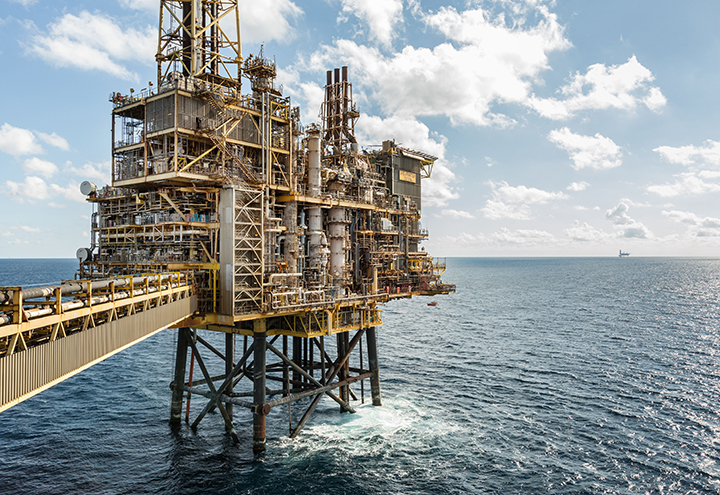
Looking ahead
The concerns are not only around the now but also about how they extend the life of resources. The Penguins development, which began as a subsea tieback to Brent Charlie in 2002, is getting a new lease of life by reimagining the concept.
“As Brent Charlie gets decommissioned, Penguins will receive a dedicated FPSO, and we will look to double the recovery from that field and get up to some 45,000 barrels a day of production,” Sawan said. “We need to pull all these levers to be able to continue to create an attractive investment case in partnership with the government and the regulators if we are to continue to create the oil and gas that is required for the coming decades.
“But at the same time, that commitment comes with strings and the strings attached are that we need to work together to continue to be able to make it an attractive place to grow, to continue to make it a place that has safety and that has environmental consciousness at the top of the minds. Moreover, we need to be able to work with government, regulator, and industry to be able to make sure that those who are stepping out in 2050 and reflecting on this sector do not see us as dinosaurs but the innovators who showed the courage to be able to grapple with the energy transition and help society achieve the destination that the test set for ourselves.”
Recommended Reading
Imperial Expects TMX to Tighten Differentials, Raise Heavy Crude Prices
2024-02-06 - Imperial Oil expects the completion of the Trans Mountain Pipeline expansion to tighten WCS and WTI light and heavy oil differentials and boost its access to more lucrative markets in 2024.
US Gulf Coast Heavy Crude Oil Prices Firm as Supplies Tighten
2024-04-10 - Pushing up heavy crude prices are falling oil exports from Mexico, the potential for resumption of sanctions on Venezuelan crude, the imminent startup of a Canadian pipeline and continued output cuts by OPEC+.
Trans Mountain Pipeline Announces Delay for Technical Issues
2024-01-29 - The Canadian company says it is still working for a last listed in-service date by the end of 2Q 2024.
EIA: Oil Prices Could Move Up as Global Tensions Threaten Crude Supply
2024-02-07 - Geopolitical tensions in the Middle East and ongoing risks that threaten global supply have experts questioning where oil prices will move next.
The Secret to Record US Oil Output? Drilling Efficiencies—EIA
2024-03-06 - Advances in horizontal drilling and fracking technologies are yielding more efficient oil wells in the U.S. even as the rig count plummets, the Energy Information Administration reported.


